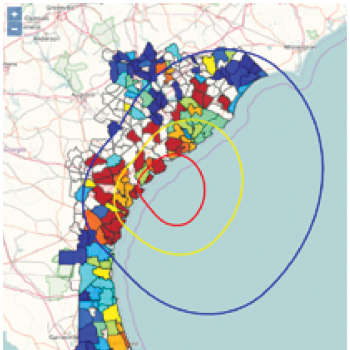Cyber Sensing for Power Outage Detection

Power outages are critical situations that disrupt daily life and can lead to serious economic consequences. Hence, there is a crucial need for a technology that can monitor and detect power outages quickly and accurately. The ability to instantly detect power outages within a geographical region has been an ongoing problem, with current methods often failing to provide prompt and efficiency detection. Traditional power outage detection often involves the use of sensory hardware devices that need to be manually monitored and can be influenced by environmental factors, resulting in inaccurate reporting. In addition, the current mechanisms for power outage detection focus primarily on physical parameters such as voltage and frequency, and do not take advantage of the wealth of data available via the Internet of Things (IoT).
Technology Description
This method for cyber sensing for power outage detection operates by first receiving a selected geographic region for power outage surveillance. It then collects Internet Protocol (IP) network addresses of networks within this geographic region, filtering all to what's referred to as geo-relevant IP network addresses. Each geo-relevant IP network address is then given a baseline value. The system is programmed to scan these filtered network addresses at regular intervals. The response of each individual IP network is tested within each interval, determining which, and how many, devices within the network respond positively to testing. This technology stands out due to its ability to constantly monitor and check the status of devices within a geographical region directly connected to power availability. It utilizes the otherwise latent data from IP networks to track power outages. This results in efficient and timely detection, ensuring swift actions can be taken to rectify power outage situations.
Benefits
- Provides real-time monitoring of power availability within a geographical region
- Allows for swift detection of power outages
- Uses existing technology and networks, reducing the need for additional hardware
- Increases efficiency of response to and recovery from power outages
- Provides a cost-effective method for monitoring power conditions
Potential Use Cases
- Energy Providers: It could help energy providers monitor power outages systematically in real-time
- Smart Cities: Cities could use this technology to monitor power outages on a municipal level and accordingly schedule repairs
- Emergency Services: In disaster situations, this technology could assist in quickly identifying areas with power outages for prioritised response
- Data Centers: It could aid data centers in monitoring their power supply and swiftly responding to failures
- Manufacturing Industries: Factories and industrial units could leverage this technology to maintain continuity of operations